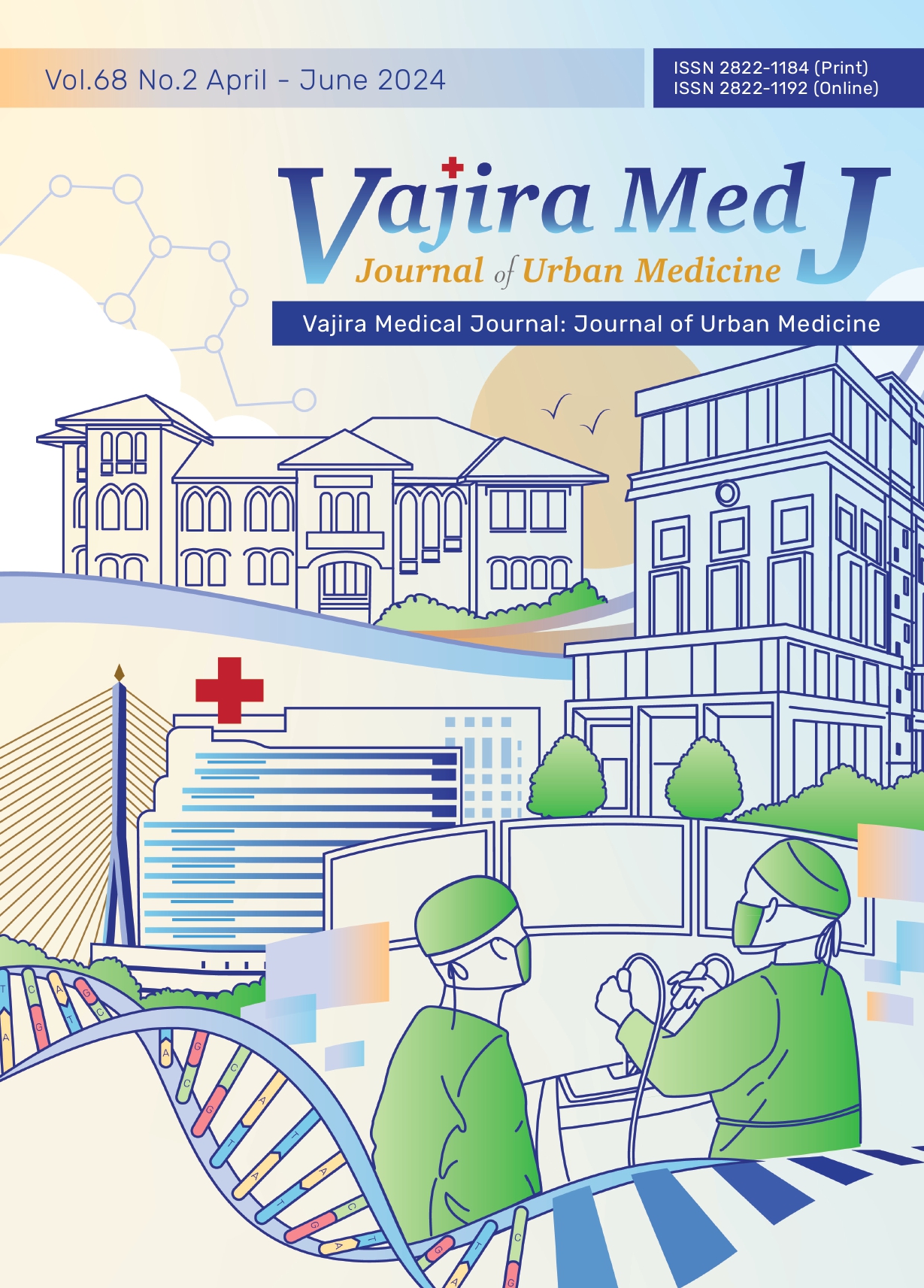Prevalence of Problematic Internet Use and Related Factors in Children with Attention Deficit Hyperactivity Disorder and Non-Attention Deficit Hyperactivity Disorder Prevalence and Factors of PIU in ADHD and Non-ADHD Children
Main Article Content
Abstract
OBJECTIVE: To compare the prevalence of problematic internet use (PIU) in attention deficit hyperactivity disorder (ADHD) and non-ADHD children and explore the related factors and effects of PIU in children.
METHODS: A cross-sectional study was done. ADHD and non-ADHD participants aged 7-15 years old with current internet use were enrolled. A self-report questionnaire collected child and parental demographic data, internet use, and related data. An internet addiction scale was used.
RESULTS: A total of 127 participants were enrolled, including 56 ADHD participants and 71 non-ADHD participants. The rate of possible PIU and PIU (possible PIU/PIU) in the ADHD group was 60.7% and 61.5% in the non-ADHD group. In the ADHD group, internet usage time ≥ 21 hours per week was a significant related factor to possible PIU/PIU (adjusted odd ratio 27.08, 95% confidence interval 2.35 – 312.04). Male was significant related factor to possible PIU/PIU in the non-ADHD group (adjusted odd ratio 4.25, 95% confidence interval 1.25 - 14.47). School level, grade, online gaming or social media exposure, and parental internet restriction were non-significant related factors in both groups. Children with possible PIU/PIU had significantly more positive depressive symptoms than the normal internet use group (p = 0.006).
CONCLUSION: The results indicate a higher rate of possible PIU/PIU in both groups and a significant relation with depressive symptoms. In routine practice, we should clarify this issue and provide education to families and children with or without ADHD to prevent internet related problems.
Downloads
Article Details

This work is licensed under a Creative Commons Attribution-NonCommercial-NoDerivatives 4.0 International License.
References
Young KS. Internet addiction: the emergence of a new clinical disorder. Cyberpsychol Behav 1998;1:237-44.
Davis RA. A cognitive-behavioral model of pathological internet use. Comput Human Behav 2001;17:187-95.
Balhara YPS, Mahapatra A, Sharma P, Bhargava R. Problematic internet use among students in South-East Asia: current state of evidence. Indian J Public Health;62(3):197-210.
Zhou M, Zhu W, Sun X, Huang L. Internet addiction and child physical and mental health: evidence from panel dataset in China. J Affect Disord 2022;309:52-62.
Ha JH, Yoo HJ, Cho IH, Chin B, Shin D, Kim JH. Psychiatric comorbidity assessed in Korean children and adolescents who screen positive for internet addiction. J Clin Psychiatry 2006;67(5):821-6.
Weinstein A, Lejoyeux M. Internet addiction or excessive internet use. Am J Drug Alcohol Abuse 2010;36(5):277-83.
Ramón-Arbués E, Granada-López JM, Martínez-Abadía B, Echániz-Serrano E, Antón-Solanas I, Nash M. Prevalence and factors associated with problematic internet use in a population of Spanish university students. Int J Environ Res Public Health 2021;18(14):7620.
Shek DT, Yu L. Adolescent internet addiction in Hong Kong: prevalence, change, and correlates. J Pediatr Adolesc Gynecol 2016;29(1 Suppl):S22-30.
Liao Z, Huang Q, Huang S, Tan L, Shao T, Fang T, et al. Prevalence of internet gaming disorder and its association with personality traits and gaming characteristics among Chinese adolescent gamers. Front Psychiatry 2020;11:598585.
National Statistic Office Thailand. Executive summary: information and communication technology device in household [internet]. 2010 [cited 2017 Jun 16]. Available from: http://doc.nso.go.th/en/survey/ict/data_ict/551031_house10_executive%20summary.pdf
National Statistical Office Thailand. ICT indicators 2017 [internet]. 2018 [cited 2023 Jan 10]. Available from: https://www.nso.go.th/nsoweb/nso/ebook
National Statistical Office Thailand. The use of ICT for child and youth [internet]. 2021 [cited 2023 Jan 10]. Available from: https://www.nso.go.th/nsoweb/nso/survey_detail/AQ
Wanajak K. Internet use and its impact on secondary school students in Chiang Mai, Thailand [thesis]. Joondalup: Edith Cowan University; 2011.
Wang BQ, Yao NQ, Zhou X, Liu J, Lv ZT. The association between attention deficit/hyperactivity disorder and internet addiction: a systematic review and meta-analysis. BMC Psychiatry 2017;17(1):260.
Çiçek E, Uçar MT, Öztürk M. Risk factors associated with problematic internet use in high school students: a nested case-control study. Addicta 2023;10(2):115-26.
Dib JE, Haddad C, Sacre H, Akel M, Salameh P, Obeid S, et al. Factors associated with problematic internet use among a large sample of Lebanese adolescents. BMC Pediatr 2021;21(1):148.
Yoo HJ, Cho SC, Ha J, Yune SK, Kim SJ, Hwang J, et al. Attention deficit hyperactivity symptoms and internet addiction. Psychiatry Clin Neurosci 2004;58(5):487-94.
Lukavská K, Hrabec O, Lukavský J, Demetrovics Z, Király O. The associations of adolescent problematic internet use with parenting: a meta-analysis. Addict Behav 2022;135:107423.
Saquib N, Saquib J, AlSalhi A, Carras MC, Labrique AB, Al-Khani AM, et al. The associations between family characteristics and problematic internet use among adolescents in Saudi Arabia. Int J Adolesc Youth 2023;28(1):2256826.
Ho RC, Zhang MW, Tsang TY, Toh AH, Pan F, Lu Y, et al. The association between internet addiction and psychiatric co-morbidity: a meta-analysis. BMC Psychiatry 2014;14:183.
Ahmed GK, Abdalla AA, Mohamed AM, Mohamed LA, Shamaa HA. Relation between internet gaming addiction and comorbid psychiatric disorders and emotion avoidance among adolescents: a cross-sectional study. Psychiatry Res 2022;312:114584.


